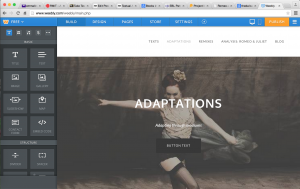Week 12 Lectorial:
Watching Valorie Curry’s short film, Kara, I was shocked by the sympathy I felt for the machine who had become a girl in front of my eyes. Even though I knew full well that a) she had been developed as a piece of technology and b) she was merely a creation in a film, not real life, when I saw what looked like a human, my response was to think of her as a human.
I recognise that technology has not yet developed to the extent portrayed in the short film, and also that there are many breakthroughs that we have yet to learn about. However, at the end of the day, I think that humans are more intelligent than machines. I don’t mean that we can do all the computation that machines can, nor can we have 10 tabs open and running in our minds at the same time or speak every conceivable language, but humans are capable of thinking for themselves; machines are not.
If technology humans have developed is clever, it’s because somebody had the idea, the initiative, the tools and the intellect to bring that idea “to life” (no Kara pun intended). What may at face value seem like a machine’s intuition cannot possibly be so.
Machines of every kind need to be programmed in some way, thus building the options we will then see when we use said technology. I think there is a risk that humans are coming to rely too heavily on technology and this begs the question of how much we are thinking for ourselves. This is the real danger; relying on technology that does not have the capacity to think for us, and losing our own capacity to create and use initiative.
